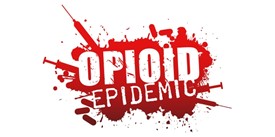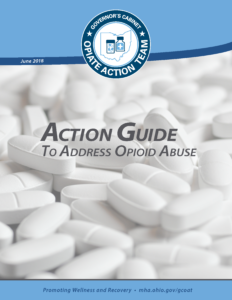“Be careful what you think, because your thoughts become your words; Be careful what you say, because your words become your actions; Be careful what you do, because your actions become your habits; Be careful what you make a habit, because your habits become your character
And your character becomes your Destiny.”
-Tony Hoffman
The Opioid Epidemic: A Personal Journey of Addiction & Recovery
After paroling prison on December 13, 2008, Tony Hoffman started living out his dream, with his addiction behind him. Tony is a Former BMX Elite Pro and placed 2nd at the 2016 World Championships in Medellin Colombia in the Masters Pro class. Tony coached Women’s Elite Pro, Brooke Crain, to a 4th place finish at the 2016 Rio Olympic Games in Brazil.
His story is one of redemption, as he has seen some of the highest highs, and the lowest lows. Tony has presented on the prestigious TEDx stage and his Goalcast video that went viral in February of 2020 has been viewed more than six million times. He is the Founder and Director of The Freewheel Project, a non-profit organization that mentors thousands of youth through action sports.
Today, Tony is one of the most requested substance abuse speakers in the country, traveling over 200 days a year to share his inspiring story with various audiences. Tony’s future goal is to open the Tony Hoffman Wellness Center where he hopes to redirect the lives of those struggling with addiction onto the path of sobriety and purpose.
The mission of the opioid crisis subcommittee is to increase awareness of the opioid crisis affecting our families, and to provide valuable information, resources, and tools so we can make a difference in our church communities.

Opioid Crisis Fact Sheet – Friday, 08/07/20
“The Numbers Are So Staggering. Overdose Deaths Set A Record Last Year.” By Josh Katz, Margot Sanger Katz, November 28, 2018. Overdose deaths are higher than deaths from HIV, car crashes or gun violence at their peaks. …drug overdoses are the leading cause of death for adults under 55. https://www.nytimes.com/interactive/2018/11/29/upshot/fentanyl-drug-overdose-deaths.html
“The Contemporary American Drug Overdose Epidemic in International Perspective”, By Jessica Y. Ho, February 20, 2019. Over the past two decades, drug overdose has more than tripled to become the leading cause of injury deaths in the U.S., outnumbering deaths from motor vehicle accidents and homicides according to the Centers for Disease Control and Prevention (CDC) and National Center for Health Statistics (NCHS)… https://onlinelibrary.wiley.com/doi/full/10.1111/padr.12228
“Drugs Most Frequently Involved in Drug Overdose Deaths: United States, 2011 – 2016”, By Holly Hedegaard, Brigham A. Bastian, James P. Trinidad, Meriane Spencer, Margaret Warner, Volume 67, Number 9, December 12, 2018. According to information from the Centers for Disease Control and Prevention (CDC), the drugs most commonly involved in overdose deaths include opioids (e.g., fentanyl, heroin, oxycodone), cocaine, methamphetamines, and benzodiazepines. https://www.cdc.gov/nchs/data/nvsr/nvsr67/nvsr67_09-508.pdf
“Naloxone: The Opioid Reversal Drug That Saves Lives. How Healthcare Providers and Patients Can Better Utilize This Life-Saving Drug.” December 2018. Naloxone has been lifesaving in many scenarios; the CDC recently issued recommendations regarding its use in patients taking opioids. https://www.hhs.gov/opioids/sites/default/files/2018-12/naloxone-coprescribing-guidance.pdf
“Opioid Overdose. Data Overview. The Drug Overdose Epidemic: Behind the Numbers.” Centers for Disease Control and Prevention. March 19, 2020. Pharmaceutical fentanyl is a synthetic opioid pain reliever, approved for treating severe pain, typically advanced cancer pain….Most of the increases in fentanyl-related harm, overdose and death in the U.S. in recent years do not involve prescription fentanyl but are related to illicitly/illegally made fentanyl mixed with or sold as heroin – with or without the users’ knowledge – and increasingly sold as counterfeit pills. https://www.cdc.gov./drugoverdose/data/index.html
In the event of an overdose (toxicity):
- pertinent history is critical and may be obtained from bystanders, family, and friends
- pill bottles, drug paraphernalia, or eyewitness accounts may assist in the diagnosis of opioid overdose
- occasionally, a trial of Narcan (naloxone) administered by an Emergency Medical Service (EMS) provider or paramedic is helpful to establish the diagnosis in the pre-hospital setting
- a person with opioid overdose commonly has respiratory depression (slow and shallow breathing – less than 10 breaths/min) and depressed level of consciousness (drowsiness, decreased alertness, unable to adequately respond, lethargic or not responding), and oftentimes eyes are red.
- cardiac complaints are the most common presenting manifestation of cocaine abuse and include chest pain (frequently seen in long-term use or overdose), myocardial infarction (heart attack), irregular heartbeat, and heart disease (cardiomyopathy). With cocaine use, sometimes the onset of chest pain may occur in 30 minutes for intravenous use, 90 minutes for crack, and 135 minutes for snorting. Elevated temperatures related to severe cocaine toxicity can be 104 degrees Fahrenheit or greater. This can lead to multiple organ failure.
Understanding Pain 
There are different types and origins of pain. For best outcome and success, physicians try to work together with their patient to understand the person’s pain and what the expectations are in terms of pain management. Pain is real and can inhibit one’s quality of life, so it is important that a person’s pain is addressed, an acceptable pain goal is set and hopefully achieved.
- Pain can be chronic, acute, or acute on chronic pain
- Pain is often measured 1-10, 10 being the worst pain. Often referred to as mild (1-3), moderate (4-6), and severe (7-10)
- There are many options for pain management – some targeted for short-acting and some for long-acting.
- A short-acting prescription of opioid narcotics is typically written for under 7 days and is rarely habit-forming nor leads to addiction.
- Sometimes opioids are the best medication of choice. Additionally, there are many non-opioid medication options that can be prescribed as alternative or simultaneously.
- Patients can discuss with their provider if they do not wish to receive any narcotics or opioids for the management of their medical or surgical pain. Certainly, they can change their mind, but they can talk to their provider and seek alternative non-opioid pain management options.
- Many physicians and patients are also incorporating alternative medicine for pain management such as Reiki energy healing, focused meditation, guided imagery, etc.
- Additional comfort measure approaches:
- repositioning
- warm or cold compress
- relaxation techniques (i.e. deep breathing, praying)
- therapeutic massage (i.e. back rub)
- diversional techniques (i.e. television viewing, music, reading)
- spiritual counseling
- mild exercise or walking
- Additional comfort measure approaches:
- Depending on the nature and cause of the pain, the patient and physician may agree that it is unreasonable to expect 0/10 pain, and that mild or moderate pain is acceptable so long as one can perform activities of daily living.
- People do not set out to become addicted to opioids. More often than not it may occur after sports or traumatic injuries or a particular surgery where the pain recovery is long.
- In recent years, the medical community is more attuned to the duration of an individual’s pain and providing short-acting and long-acting medications; or the combination of an opioid medication with a non-opioid medication (For example, oxycodone taken when needed with scheduled Tylenol every 6 or 8 hours)
- Many physicians and patients are also incorporating alternative medicine for pain management such as Reiki energy healing, focused meditation, guided imagery, etc.
*Be proactive and part of the solution:
- When there is an opioid prescription at home, keep it locked up and away for children, teens, and young adults.
- When an opioid prescription(s) is/are no longer needed, do not hold onto it “in case I need it one day”. Remove it from your medicine cabinet and bring it to your local Police Station or Hospital Kiosk Medication drop-off. Do not keep them at home, and do not flush them down the toilet.
- When caring for an end-of-life family member/significant other who passes on, immediately collect, appropriately remove, and discard ALL medications, including opioids from the home.

Suggested Literature by the subcommittee:
- S.O.B.E.R. – A Story of Addiction Told by a Mother and Her Son, By Anita Baglaneas Devlin and Michael Develin Jr., 2014
- The Recovery Book: Answers to All Your Questions About Addiction and Alcoholism and Finding Health and Happiness in Sobriety, Authored by Al J. Mooney, MD, Catherine Dold, and Howard Eisenberg, Forward by Harry Haroutunian, MD (Physician Director, Betty Ford Center), 2014
- Beautiful Boy: A Father’s Journey Through His Son’s Addiction, By David Sheff, 2008
- Dopesick: Dealers, Doctors, and the Drug Company that Addicted America, By Beth Macy, 2018
- Long Way Home, By Cameron Douglas, 2019
- Pain Killer – An Empire of Deceit and the Origin of America’s Opioid Epidemic, by Barry Meier, 2003, 2018 (Expanded and Updated Edition)


